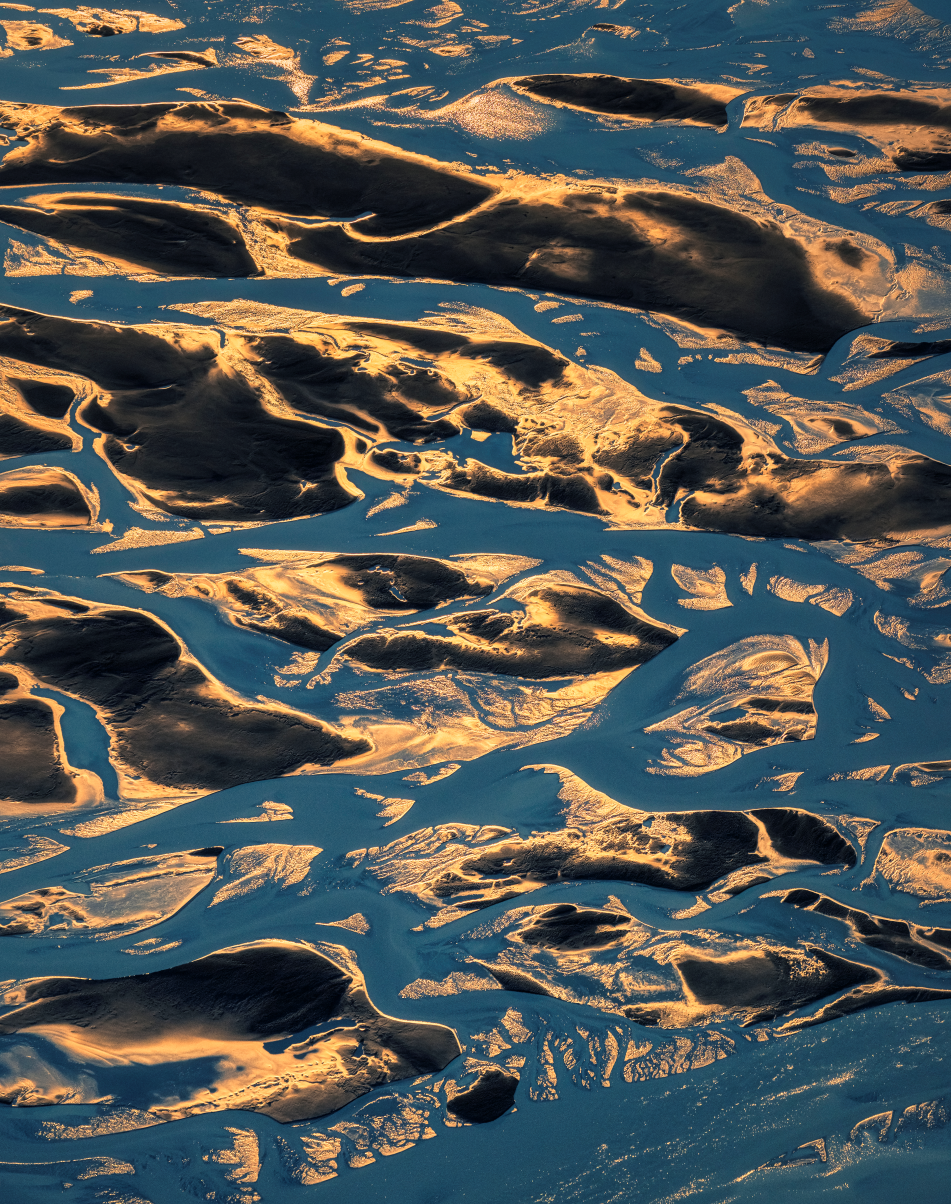
Landscape poetry - Elevating Your View
A dream came true for me by flying over the Icelandic landscape in 2019.
I literally elevated my view and earned a new perspective on my photography.
During my first visit to Iceland in December 2018 I fell in love with its
diverse landscape, as so many photographers do. When returning
home from my first trip there I already knew I would soon return.
I yearned to see Iceland in summer, go to the highlands and get a
chance to see the country's wonderful landscape from above. I was
having images in mind from the characteristic rivers running through the
volcanic landscape. Artists like Hans Strand, who had been
photographing from the air for many years, had a huge influence on my
growing desire to shoot from a plane. Long before getting into
photography myself I had been interested in abstract art. So it did not
come as a surprise that abstract aerial photographs were what
interested me the most. Back home I reached out to an experienced
pilot from Iceland and set up a flight date for summer.
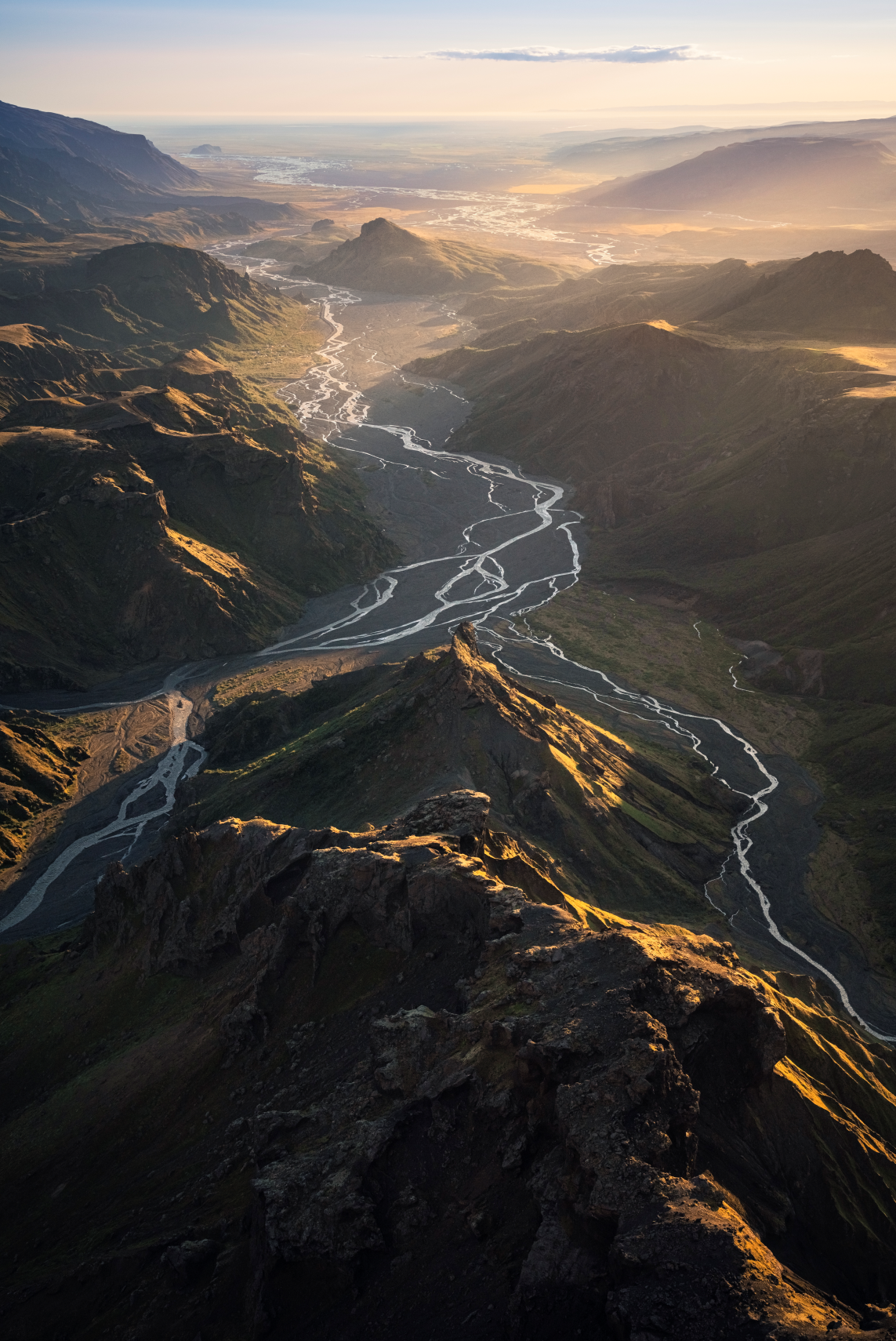
You can imagine my joy and excitement when the day came in July
2019. I met my buddy Mikkel Beiter, a great fellow photographer from
Denmark, at the airport of Keflavik to start our photo trip. After grabbing
our luggage and leaving the airport we headed straight to a small airport
in Reykjavik to go on a 3 hours flight with a Cessna. The sun was shining
that midsummer evening and the mood was great. My heart was beating fast when entering the small plane. I was feeling like a kid on
Christmas eve: excited, full of joy and nervous.
In the weeks prior I had reached out to Hans Strand asking for advice.
Not on how and where to photograph, but on how to prevent getting air
sick. I had very vivid memories of my flight to Lofoten, Norway, earlier
that year, that left me shaking. I had flights in severe storms. One of them
to the Lofoten islands needed to return after several unsuccessful
landing attempts. That very flight was the first one in my life that got me
airsick and….well, made me use the paper bag the first time. Several
times. This traumatic experience left me a bit worried how I would handle
a flight in a lightweight plane. Hans was helpful with advice. I went to the
doc, got the use of Scopoderm cleared up and ended up not taking it.
I read the patient info leaflet stating that as a side effect for some people
vision could be blurred. Needless to say that was the last thing I wanted
to ruin my experience and shooting ability with. I told myself ‚it will all be
good'. And so it was. No, in fact, that is an understatement. It was
amazing.
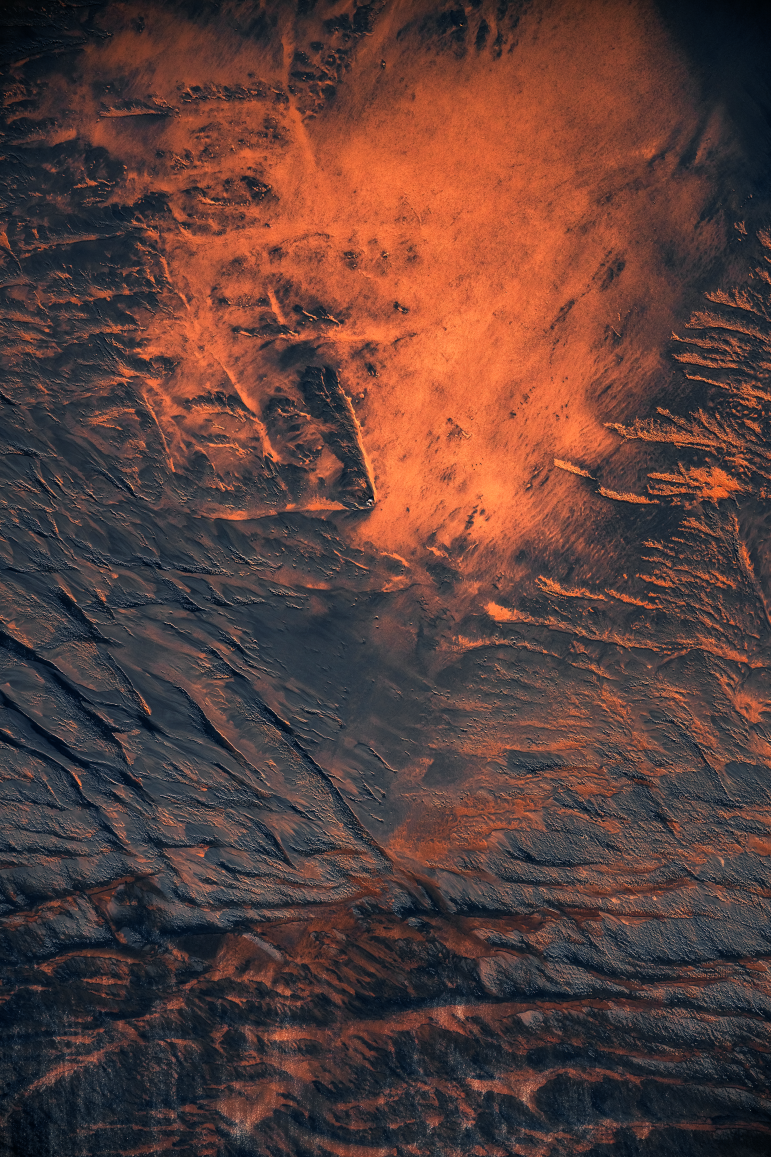
I had my gear set up and ready. My Sony a7riii had the 24-105 mm lens
attached which enabled me to zoom into details from the air but also go
for wider shots. I had two blank 64 gb sd-cards and a fully charged battery (another
one in my cargo p a n t s , j u s t i n case) inside my c a m e r a . N o filters, no lens
h o o d b e c a u s e that could only lead to problems when holding the camera out of the open window in full flight. I used a camera strap as safety just in case t h e a i r s t r e a m would knock the camera out of my hands. Speaking of hands, I wore l i g h t g l o v e s because that air high above the land of ice was very cold
After reaching flight altitude I made a few test shots to check for image
sharpness. I knew I had to go for a very fast shutter speed in order to get
sharp images while being inside a flying plane. Ultimately I settled for
1/1250 sec.. The light changed significantly throughout the three hours
experience. So I kept an eye on the histogram and adapted by changing
aperture (up to open f4) and ISO (up to ISO 1000). While in the air
everything happens fast, I made sure to check the borders of the frame
and zoom a bit wider than needed to get enough room for editing on the
computer later. I literally fired away in continuous shooting mode. That way I amassed about 2.500 images during the flight but also made sure I got the different angles of
a scene while the plane was moving into position. In those cases I better collect more shots thannecessary and select later at home.
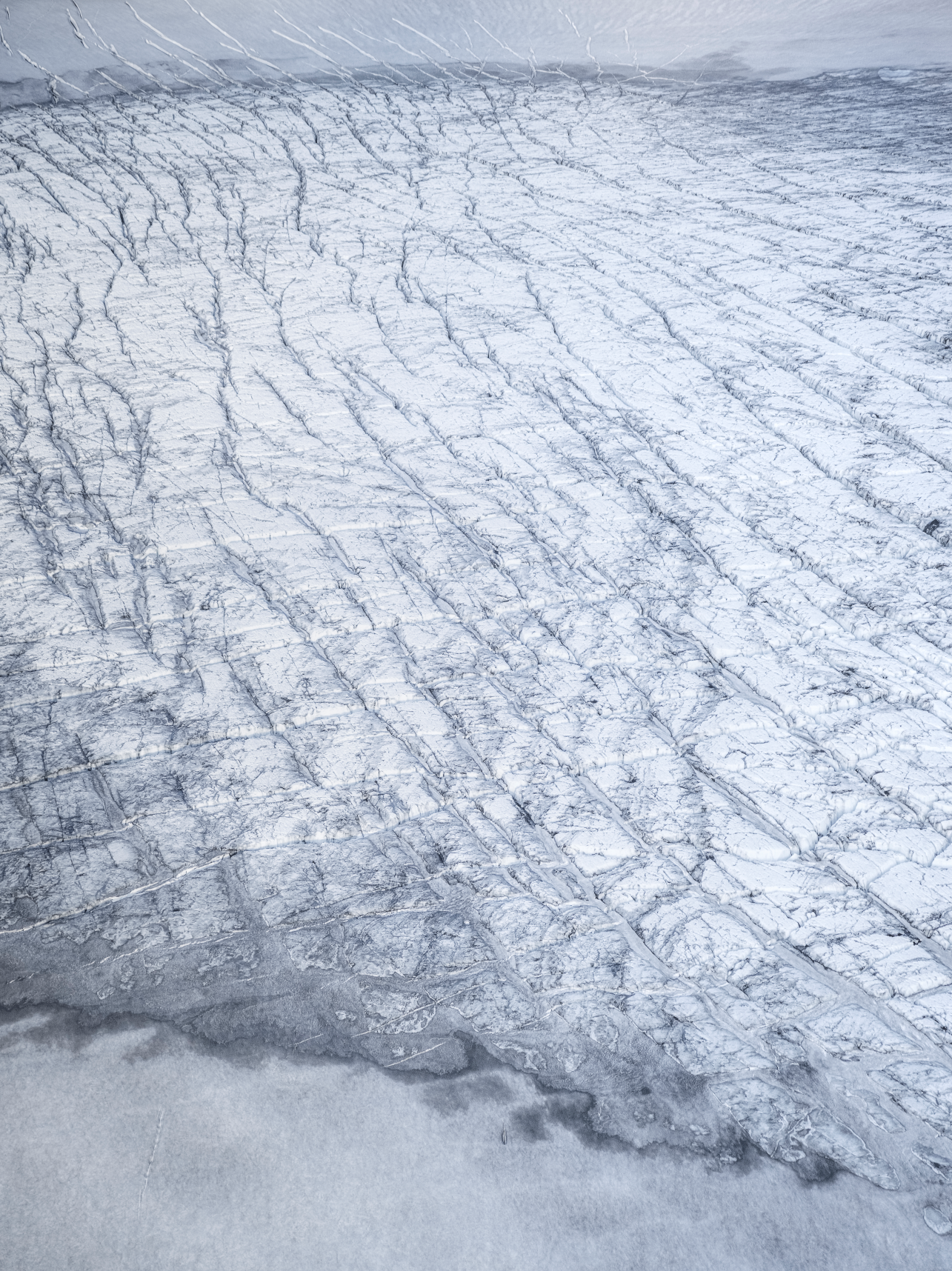
But gear and settings to me are mere tools in order to achieve what I want to photograph. Being able to handle my camera blindly made me be completely
o p e n t o o b s e r v e t h e scenery and take the images I was after. And
I was literally blown away by the gorgeous colourful rivers with its abstract
shapes and patterns, the waterfalls, the jagged m o u n t a i n s a n d t h e
impressive glaciers.
To get the abstract images I fancied I excluded the sky from most of my
images. That way the viewer gets less orientation on what he sees, but
it also makes the image more mysterious and interesting. That was
exactly what I wanted. And I felt that focusing on this approach helped
me feature more of the landscape's soul. So I was particularly looking
out for great shapes, patterns and colours. I literally let the earth speak
and put that into an image.
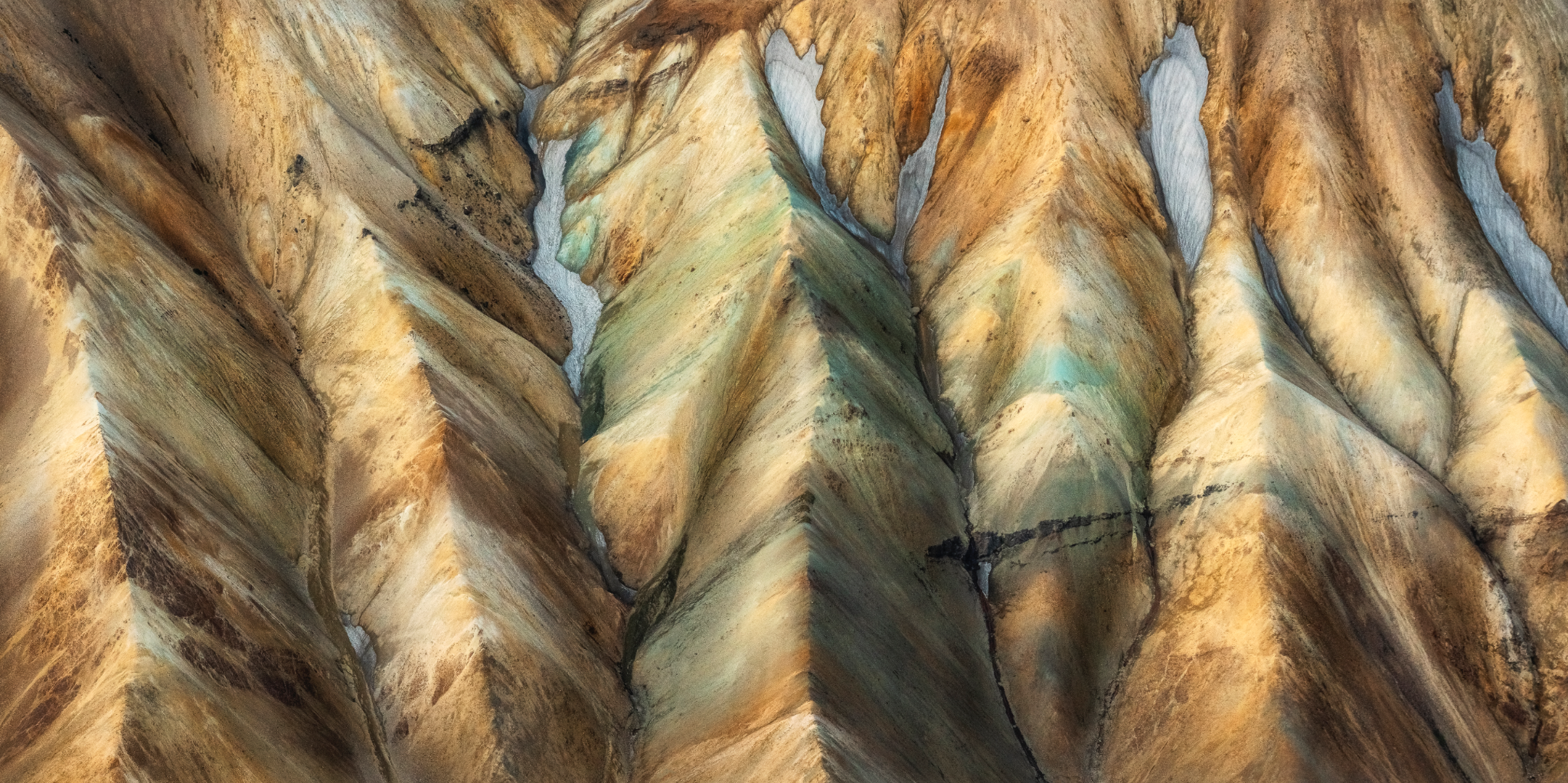
With words you can write poems. Poetry is arranged and chosen
language that evokes an imaginative awareness of experience or a
specific emotional response. Images are usually too explicit and often leave no double meaning or mystery and therefore fall flat compared to words of a poem. With my images from this highly elevated view point
I tried to make the incredible landscape be a poem inside the frame I gave. And just like with every poem: some things stick with you and grow inside
your mind, get a meaning of its own and some things rest with less attention and connection. To me it elevated my artistic vision and the way I see
nature. When I look at those images now, I see joy and beauty and a wonderful memory.
Author's Details:
Kai is an eminent landscape photographer from Germany. From a human resource consultant to a freelance landscape photographer, the transformation for Kai begun with a trip to Ireland in 2016. His works earned him many awards and followers in social media from all over the world.


Post a comment